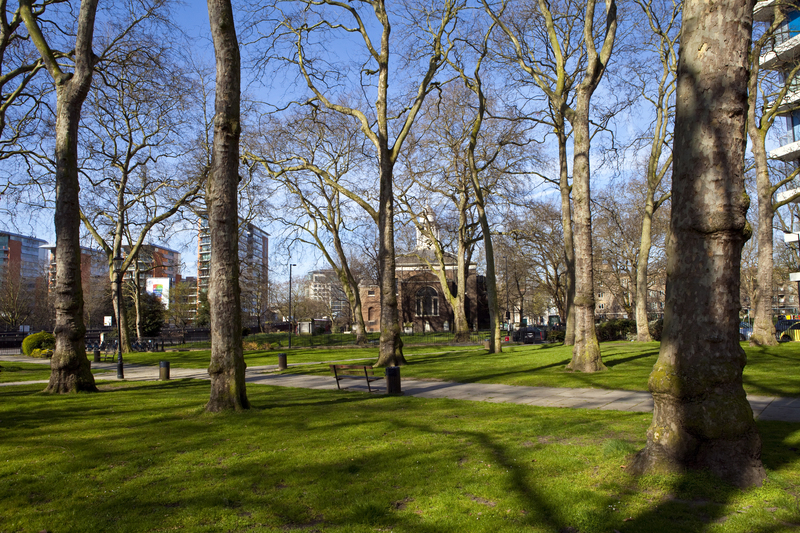Winter-Proof Your Plant Paradise with These Tips
As the days grow shorter and temperatures plummet, garden enthusiasts everywhere begin to worry: How can you protect your beloved plant paradise during winter? The cold season poses unique challenges for indoor and outdoor plants alike, but with a proactive approach and some strategic planning, you can ensure your garden not only survives the frigid months--but thrives when spring returns. In this comprehensive guide, we'll cover the best ways to winter-proof your plant oasis and equip you with expert advice to shield your green friends from the chill.

Understanding Winter Stress: What Plants Face
- Frost and Freeze
- Dry Air and Low Humidity
- Lack of Sunlight
- Watering Hazards
- Pests Seeking Shelter
Winter stress is a silent killer for plants, and understanding its sources is the first step in winter-proofing your garden paradise. Outdoor plants risk frostbite and root damage, while indoor flora might suffer from dry air or insufficient light. Knowing which challenges apply to your unique plant collection will help you tailor your approach--so let's dive into actionable strategies to protect your plant sanctuary this winter.
Prepping Your Garden for the Cold: Outdoor Plants
1. Mulch - Your Plant's Winter Blanket
Applying a thick layer of organic mulch is one of the easiest and most effective methods to winter-proof outdoor plants. Mulch regulates soil temperature, retains moisture, and protects roots from harsh freeze-thaw cycles. Some top choices include shredded bark, straw, or even fallen leaves.
- Add 2-4 inches around your plant bases--just avoid direct contact with stems to prevent rot.
- Apply after the ground begins to harden, usually late fall.
2. Watering Wisely Before the Freeze
Water deeply before the ground freezes. Moist soil holds more heat than dry soil, which can protect plant roots during cold spells. However, scale back on watering as the temperatures drop in winter, since wet soil during prolonged chill can lead to root rot.
3. Shielding Vulnerable Plants
- Consider using burlap wraps, frost cloths, or horticultural fleece to protect tender shrubs, young trees, and perennials.
- Create homemade plant cloches using plastic bottles or translucent containers to shelter delicate plants from frost.
For especially valuable or sensitive specimens, don't hesitate to move container plants indoors or into a garage, greenhouse, or shed.
4. Pruning: What to Cut and What to Leave
While it may be tempting to prune all your plants for a tidy winter look, some plants benefit from being left intact. Wait until late winter or early spring to prune many shrubs and trees--cutting too early can expose them to cold injury. Remove only dead or diseased branches, leaving healthy growth to act as winter insulation.
Indoor Plant Protection: Creating a Cozy Haven
1. Maintain Humidity
Forced indoor heat and closed windows can leave air bone dry, which stresses many popular houseplants such as ferns and calatheas.
- Use a humidifier in your plant room, or place trays of water near heat sources for gradual evaporation.
- Group plants together to create a microclimate with increased humidity.
- Mist leaves sparingly--some plants prefer indirect methods of humidity.
2. Maximize Light Exposure
Winter days mean less sunlight for your indoor plant paradise. Move plants closer to, but not touching, bright windows. For sun-loving botanicals, invest in a grow lamp designed for houseplants, ensuring they receive sufficient light for healthy growth. Rotate plants every few days for even exposure.
3. Adjust Watering Schedules
Most indoor plants need less water in winter. Check soil moisture before watering, as the reduced daylight slows plant metabolism. Overwatering is a common cause of root rot in the colder months--when in doubt, opt for a little underwatering rather than too much.
4. Keep Pests at Bay
Winter is no break from pests--they often migrate indoors with the warmth. Keep an eye out for spider mites, aphids, or mealybugs, especially near windows or on new plant arrivals. Inspect your plants regularly, wipe leaves gently with a damp cloth, and treat infestations promptly with insecticidal soap or neem oil.
Essential Products for Winter-Proofing Your Plant Paradise
- Mulch for insulation
- Frost blankets and garden fleece
- Grow lights for indoor plants
- Humidifiers and humidity trays
- Quality pruning shears
- Pest control products (neem oil, insecticidal soap)
- Sturdy plant containers (with drainage!)
Sheltering Special Plant Types in Your Winter Oasis
Evergreens
- Evergreens are hardy, but they can lose moisture through their needles in cold winds. Wrap new or vulnerable shrubs in burlap or install a windbreak.
Bulbs and Perennials
- Mulch deeply and cut back dead stems only after hard frost to winterize your perennial beds.
- In colder climates, dig up tender bulbs like dahlias or cannas for storage indoors until spring.
Tropical and Subtropical Plants
- Tropicals, from hibiscus to citrus, can't survive frosty nights. Move them indoors or to a heated greenhouse at the first sign of cold.
- Acclimate plants slowly to indoor conditions to prevent shock.
Common Winter-Proofing Mistakes to Avoid
- Forgetting to water on warm, sunny winter days. Even in cold weather, dry spells can harm plant roots if the soil thaws.
- Piling mulch too high against stems or tree trunks. This can trap moisture and foster disease.
- Ignoring indoor air quality. Dusty, stagnant air stresses houseplants. Keep rooms ventilated (just avoid cold drafts).
- Moving indoor plants too close to heat vents or radiators. Sudden temperature swings can scorch leaves or dry soil rapidly.
- Neglecting pest inspections. Pests multiply faster indoors where there are no predators.
Frequently Asked Questions about Winterizing Plant Paradises
How do I protect my container plants outside during winter?
Group pots together in a sheltered spot, such as close to a south-facing wall. Wrap containers with burlap or bubble wrap and raise them off the ground with pot feet or bricks to prevent waterlogging and freezing.
Should I fertilize plants in winter?
In general, hold off on fertilizing during the winter months. Plants are dormant or semi-dormant and additional nutrients can do more harm than good.
What if it gets unusually cold? Can I bring outdoor plants in temporarily?
Absolutely! Bring sensitive plants inside during extreme cold spells--just check for insects before relocating. Acclimate them back outdoors gradually when temperatures rise.

Pro Tips for a Thriving Winter Garden
- Track the weather forecast and be ready to cover plants on freezing nights.
- Clean and sharpen your garden tools--healthy plants start with good hygiene!
- Label perennials and bulbs in autumn so you can easily locate and care for them come spring.
- Enjoy the garden beauty winter provides--consider adding structure and winter interest with hardy evergreens, red-twig dogwoods, or decorative grasses.
Final Thoughts: Let Your Winter-Proofed Plant Sanctuary Shine
With these expert winter proofing strategies for your plant paradise, you can rest assured your favorite foliage will weather the cold with ease. Remember, a little preparation in autumn can make all the difference in the health, beauty, and vibrancy of your garden oasis come spring. So grab your gloves, mulch, and covers--it's time to embrace the season, protect your plant collection, and keep your indoor and outdoor paradise thriving all winter long!
Now that you know how to winterize your plant paradise, start planning and prepping today--your future self (and your plants) will thank you!
